JavaScript is the internet’s most used client-side scripting language. 88.9% of all websites and web apps use JavaScript in one form or the other for animations, user interactions, optimizing page load speeds and even for security purposes. JavaScript is also the most popular language for GitHub repositories
Naturally, with such a large user base Javascript has tons of tools to help improve your code and generally make coding JS faster and easier. In this post we will be discussing the 10 Best JavaScript Frameworks and Libraries.
The difference between Frameworks and Libraries
Often when discussing any programming related technology, the words Frameworks and Libraries are used interchangeably. However, there is a difference between the two. A library is a collection of functions which your code can call whenever it needs them. Libraries can save lots of time by providing pre-written code for commonly used functions.
A framework is often a collection of software libraries which provide a proper, defined interface to application programming (i.e. creating apps). Frameworks are different from libraries due to some unique features like inversion of control. This basically means that in a framework, unlike in libraries or normal user applications, the overall program’s flow of control is not dictated by the caller, but by the framework.
5 Best JavaScript Frameworks
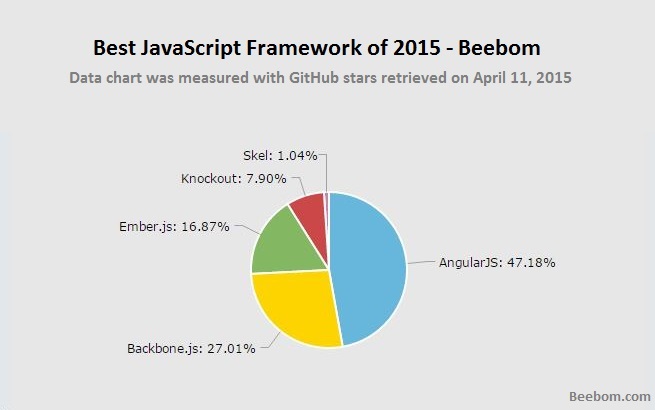
1. AngularJS

AngularJS is an open-source web app development framework by Google, based on JavaScript. AngularJS aims to be for dynamic web applications what HTML is for static web pages. AngularJS extends HTML, and has extremely powerful features like deep linking, and client side form validation without any extra JavaScript code. AngularJS provides server communication too, so you do not have to worry about using more software and thus more programming languages, for the backend of your app.
Angular even lets you create new HTML elements, using a feature called directives. Components are one of the most useful features of AngularJS. Using Components you can create code that is easily reusable. It also lets you hide complex DOM structures, CSS, and behaviors.
[vc_button title=”Visit Site” target=”_blank” color=”default” size=”size_small” href=”https://angularjs.org”]
2. Backbone.js

One of 2015’s most popular frameworks, Backbone.js, as the name suggests, gives structure to web applications. Backbone uses data represented in models. Models can be created, validated, destroyed and saved to the server. UI actions cause changes to the models, and when this happens the Views which display the models’ state get re – rendered.
You can read more about how models, key-value bindings, and views (which can perform declarative event handling) come together to form Backbone’s API, in their documentation.
[vc_button title=”Visit Site” target=”_blank” color=”default” size=”size_small” href=”http://backbonejs.org/”]
3. Ember.js

Ember.js features Handlebars integrated templates that automatically update as the underlying model data changes. One of Ember’s more powerful features is Components. Using, Components you can create your own app-specific HTML tags, where you can use Handlebars to create the markup and Javascript to implement custom behavior.
Ember uses jQuery to fetch data models from the server, so if you know jQuery, you can easily retrieve JSON stored on the server.
[vc_button title=”Visit Site” target=”_blank” color=”default” size=”size_small” href=”http://emberjs.com/”]
4. Knockout

Knockout is a MV (Model – View) Javascript Framework which specializes in easy declarative bindings, automatic UI updation (on change in the model state) as well as powerful templating features. Knockout is built on pure Javascript, without any external dependencies. It also happens to work on most browsers, including really out-dated browsers like Internet Explorer (v6).
[vc_button title=”Visit Site” target=”_blank” color=”default” size=”size_small” href=”http://knockoutjs.com/”]
5. Skel
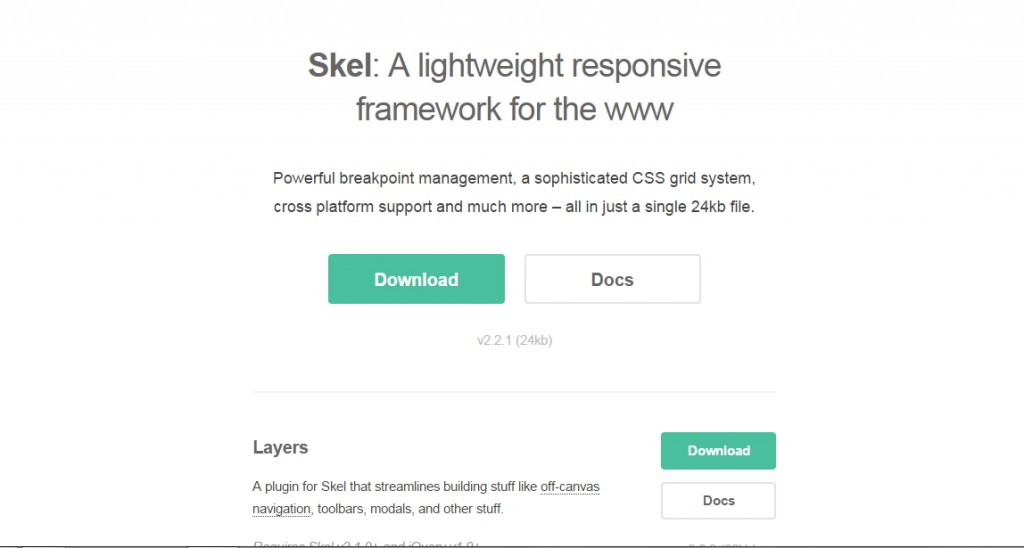
Skel is an extremely lightweight Javascript framework. Its total size is only 24kb as opposed to 39kb for AngularJS and 54kb for Knockout. Skel is perfectly suitable for developing both web apps as well as responsive websites. It even includes a CSS grid system, which you can read about on their documentation. Skel also has some great features like normalization of browser styles and API functions.
[vc_button title=”Visit Site” target=”_blank” color=”default” size=”size_small” href=”http://getskel.com/”]
5 Best Javascript Libraries
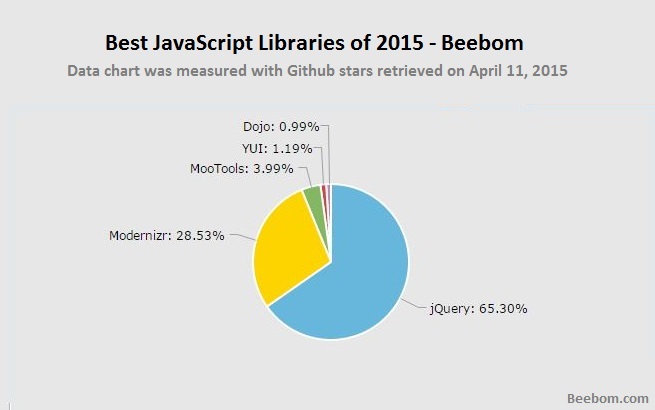
1. jQuery

In today’s web, jQuery is to Javascript, what Javascript is to client-side scripting languages. It has an astounding 95% market share when compared against other Javascript libraries. jQuery is used mainly for animations and simple website effects, like transforming elements, changing CSS properties, and utilizing event handlers.
The fact that it is small, packed with features, easy to get started with and still manages to give great performance, makes jQuery a hit with developers everywhere. jQuery even supports user-created plugins. It is undoubtedly the numero uno of Javascript libraries.
[vc_button title=”Visit Site” target=”_blank” color=”default” size=”size_small” href=”http://jquery.com”]
2. Modernizr
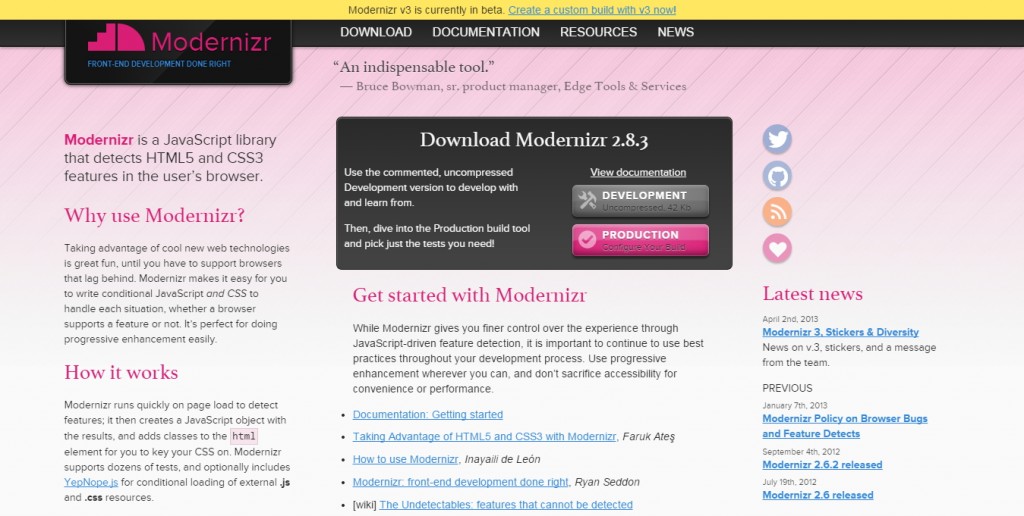
After jQuery, Modernizr is the most used Javascript library. Modernizr’s job is to detect what HTML and CSS technologies your browser supports. After detecting, Modernizr creates an object with all the properties stored as Boolean values.It then creates classes in the <html> element to explain exactly what is supported and what is not. Modernizr can be used alongside with pretty much anything.
Additionally, Modernizr also supports a script loader, so you can use polyfills to support some never functionalities to an older browser.
[vc_button title=”Visit Site” target=”_blank” color=”default” size=”size_small” href=”http://modernizr.com/”]
3. MooTools
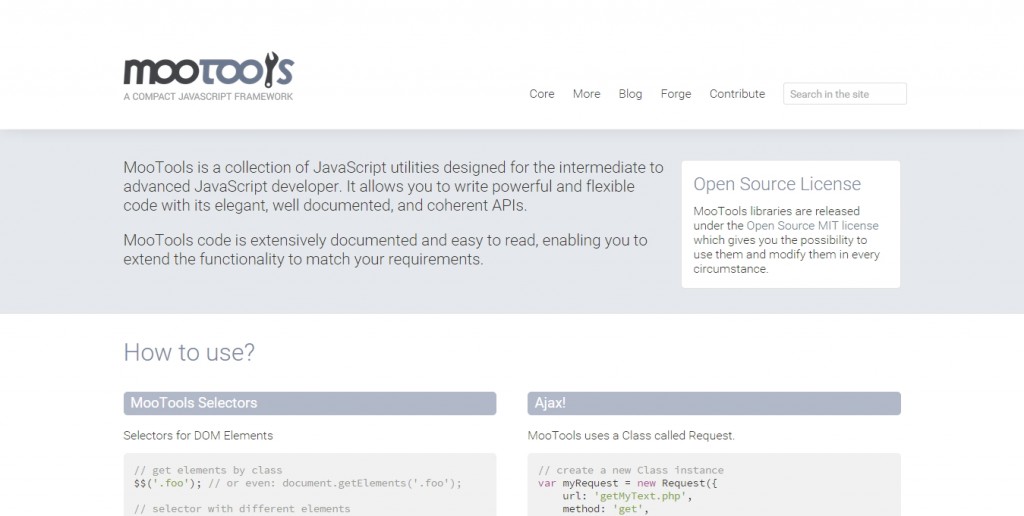
MooTools is a collection of different Javascript libraries that allows you to write flexible code with greater ease, using its APIs. MooTools has extensive documentation and a large number of useful features (Event handlers, creation of new DOM elements,selection of DOM elements, etc) thus making it an excellent tool for web development.
[vc_button title=”Visit Site” target=”_blank” color=”default” size=”size_small” href=”http://mootools.net/”]
4. YUI
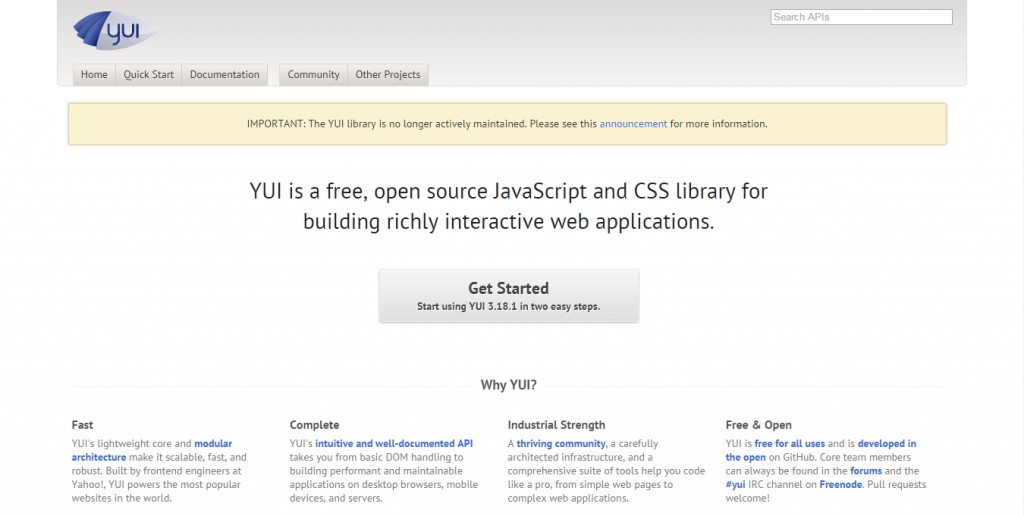
The YUI library is an open source CSS and Javascript library for front-end development. YUI was developed by Yahoo, but as of now the YUI library is no longer being maintained. It can still be downloaded from the YUI website.
[vc_button title=”Visit Site” target=”_blank” color=”default” size=”size_small” href=”http://yuilibrary.com/”]
5. Dojo

The Dojo Toolkit consists of several Javascript libraries whose main aim is to make it easier to develop websites and web applications. Dojo is small and extremely fast. It also has a widget library ‘dijit’ and a 2D vector graphics API called Dojo GFX, that lets you develop without worrying about your browser’s native graphic technologies.
[vc_button title=”Visit Site” target=”_blank” color=”default” size=”size_small” href=”http://dojotoolkit.org/”]
SEE ALSO: Best Free PHP Frameworks for 2015
If you have any suggestions regarding this article, please leave it in the comments below.

















